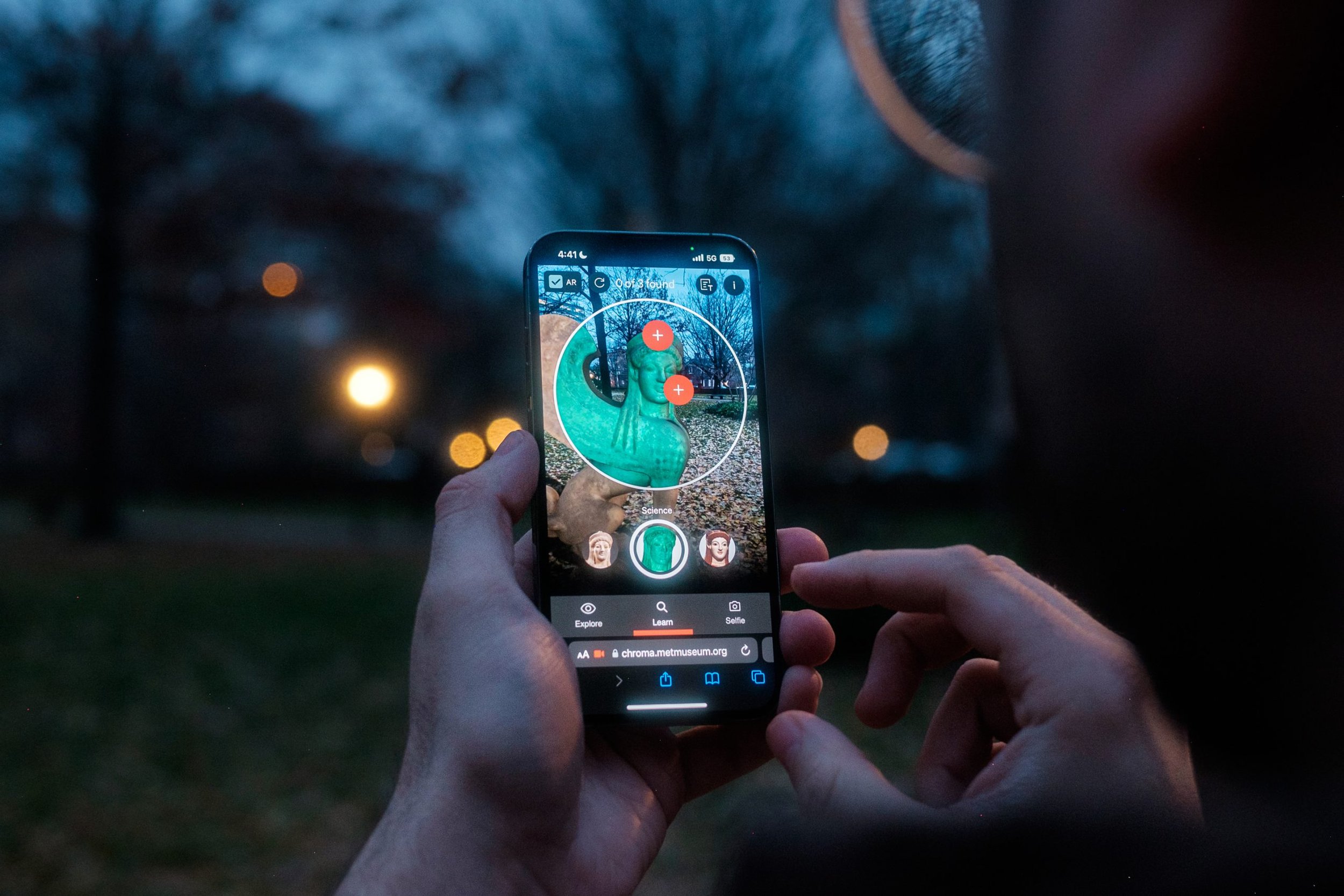The Metropolitan Museum of Art : Chroma AR App
For a groundbreaking exhibition at the Metropolitan Museum of Art, I designed Chroma AR, a web-based AR tool that lets users get up close and personal with a 2500-year-old sphinx. The project features both interpretive and playful components that reflect collaborative work among scientists, imaging specialists, conservators, technologists, art historians, and others.
MY ROLE:
Lead UX Designer, Visual Designer, Content Strategy
I led UX efforts for the web and AR app (research, concept, wireframes, user testing, and design) and worked closely with scientists and content strategists to achieve this. I also spearheaded accessibility efforts by designing alternative ways to explore the app.
Designed at Bluecadet for the Metropolitan Museum of Art.
Uncovering the Lost Colors of Ancient Greek Mythology
Chroma AR is a web-based experience that allows smartphone users to virtually recreate an ancient Greek sphinx sculpture in full color, in their own space, comparing the vivid reconstruction with how it looks today. The app features several different modes in which users can use an AR “lens” to explore the deep scientific, art historic, and analytical tools used to uncover its lost color.
Promotional video by the Metropolitan Museum of Art
The Surprising Power of Color
Chroma AR is a staged experience with several layers of engagement. It features an initial, celebratory moment that transforms the sphinx as we know and see it now into it’s original colorful form. By toggling between the object as it is today and in color, visitors implicitly understand the purpose of color. It inspires them to actively investigate how we know and why it matters, and invites them explore deeper. Rather than satisfying all visitor curiosities, the purpose of the app is to draw them into the exhibit to learn more.
I worked with our ECD and content strategist to devise a multi-staged experiential and content framework
Learning From the World’s Best Researchers
We designed the Chroma AR interface to be enjoyed at home, at the museum, or anywhere else. Users have the ability to place the sphinx in any space— viewing it as it looks today, or as it was originally installed.
For those who want to learn more, the ‘Learn’ tab gives users a chance to try on virtual “lens” to better understand the reconstruction of the sculpture. Users can view a comprehensive 3D AR model of the sphinx to discover new details and new stories. They analyze and inspect the sculpture through a game-like mechanism, getting a taste for the Met’s research and learning the basics of polychromy.
‘Learn’ mode. Users can toggle between different “lenses” and participate in an x-ray scavenger hunt
The “Explore” mode guides the user through the history and context of the sphinx. The “Learn” mode gives users the ability to utilize a virtual “lens” to better understand the reconstruction of the sculpture. The “Selfie” mode allows users to try on the sphinx’s reconstructed crown and share on social
Sharing on Socials
In “Selfie” mode, users can virtually try on the sphinx’s reconstructed crown and easily snap a photo to share with friends and family.
Users can try on a reconstruction of the sphinx’s diadem and share on social
Designing for Accessibility
Current AR technology is inherently inaccessible. It often requires a full range of movement in a physical space — not to mention potentially needing specialized and expensive equipment. I led design and UX efforts to give users alternate ways to explore the sphinx, including an intuitive model viewer, accessible UI options, and full transcripts of all commentary. Definitely not perfect, but a step in the right direction, at least.
Screens showing alternate ways to explore the sphinx — Intuitive model viewer, accessible UI options, transcripts, etc.
TEAM:
Executive Creative Director: Brett Renfer
Art Director: Jillian Hammer
Lead UX Designer: Janet Lu
Producer: Katie Lannigan
Technical Lead: Jason Webb
Content Strategy: Nina CallawayRECOGNITION:
Commarts | Interactive Design Article Feature




